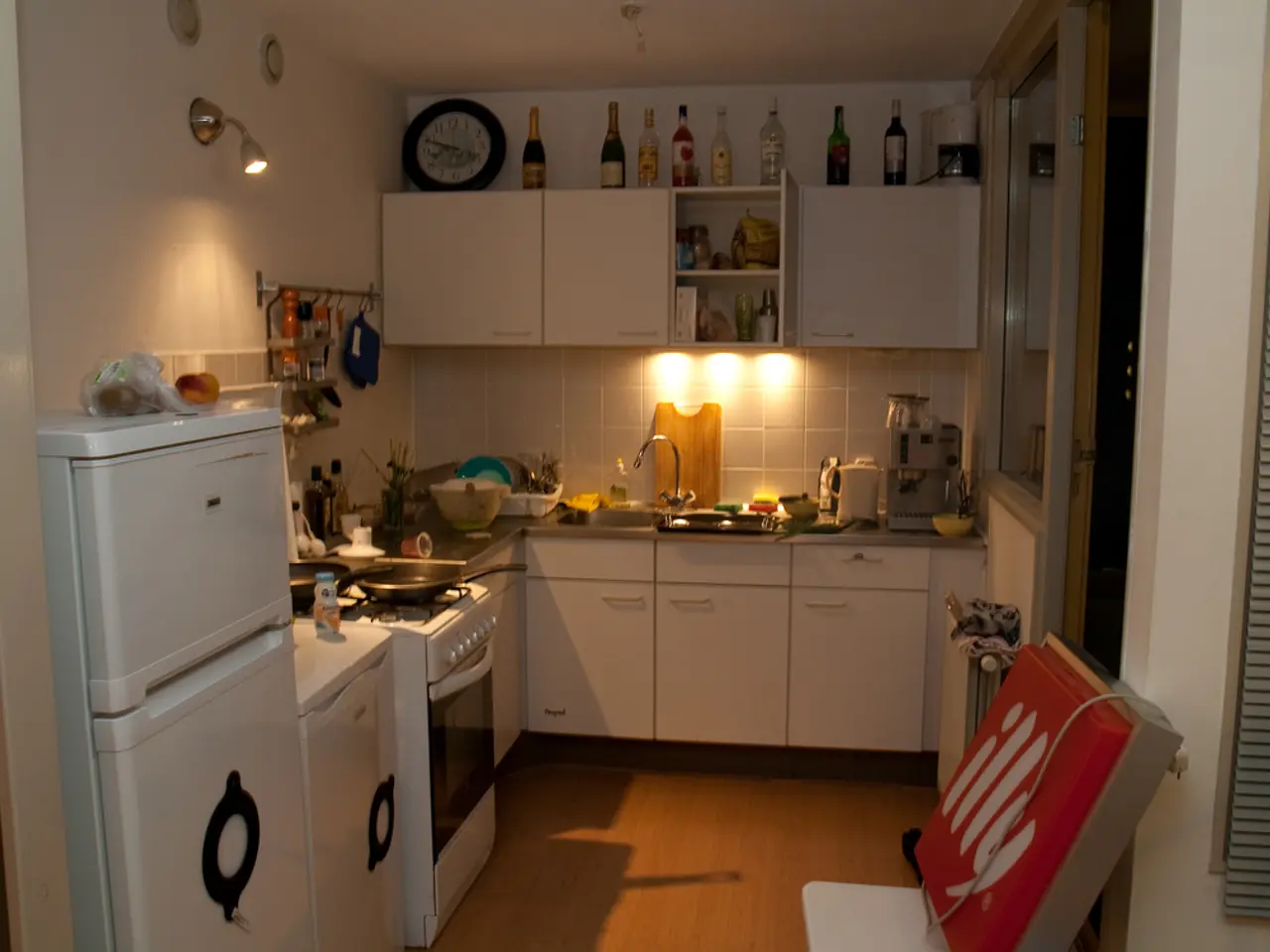Should upper kitchen cabinets reach the ceiling or leave a gap? Guidelines for when to close the space and when to leave it open.
In the realm of modern kitchen design, full-height kitchen cabinets have emerged as a popular choice, striking a balance between style, functionality, and natural aesthetics. With a resurgence of warm, earthy tones and sleek designs, these cabinets are set to transform kitchen spaces in the coming year.
Natural wood finishes, such as oak, walnut, maple, and honey, are making a strong comeback. These finishes feature visible grain and matte or lightly textured surfaces, bringing a sense of nature and warmth into the kitchen. This trend aligns with the biophilic design trend, making kitchens feel more inviting and organic.
The classic shaker cabinet is getting a modern refresh, with thinner frames (around half an inch) to give full-height cabinets a sleeker, airier, and more contemporary look. This design retains some traditional warmth and detail while offering a more contemporary aesthetic.
Two-tone colour schemes remain very popular, with lighter upper cabinets (white, cream, soft gray) enhancing the perception of height and brightness, while darker bases or full-height cabinets in deep blue, charcoal, or wood tones add sophistication and contrast.
Functionality and storage optimization are key considerations. Homeowners increasingly favour functional upgrades such as replacing traditional lower cabinets with drawers for better access and usability. For full-height cabinets, this means maximizing storage through smart interior organization and easy access solutions.
Matte and softly textured finishes dominate over high-gloss styles, contributing to a more natural and handcrafted appearance. Additionally, sustainable materials like engineered wood and bamboo are gaining traction among environmentally conscious buyers.
The overarching 2025 kitchen design theme of "quiet luxury" and personalization also influences cabinet choices. Full-height cabinets often feature subtle, elegant designs that enhance wellness and comfort in the kitchen without overwhelming boldness.
Some homeowners choose to have kitchen cabinets go all the way to the ceiling to achieve a tidy look, while others might forego this to create a larger feel in the room. A kitchen with a ceiling height of at least 2.1m should allow enough room to breathe. Many kitchen manufacturers have a standard installation height for cabinets, and adding top boxes above the standard tall run of cabinetry can be visually appealing and practical for homeowners.
Glass-fronted cabinetry is gaining in popularity for storing glassware and other items. When fitted kitchens became the norm in UK households, wall units were more popular and set at eye level, but they did not reach the ceiling. However, maximizing a kitchen's storage potential is a current trend, with homeowners choosing to install floor-to-ceiling cupboards.
Opting to have top boxes glazed in a traditional Georgian-style kitchen can look more grand. For those who do not need the extra storage space, top boxes can serve a visual purpose. Deciding whether kitchen cabinets should go to the ceiling can be a crucial design element in planning a new kitchen.
Kitchen manufacturers like Ikea offer units that can be purchased and painted to match a fitted kitchen, with a height of 40cm, ideal above wall units. An alternative solution to maximize storage in kitchens with wall units that don't reach the ceiling is to use boxes or baskets that are easy to take down.
Experienced designers like Molly Chandler and Al Bruce, who established his own Shaker kitchen company in 2018, are at the forefront of creating quality kitchens to suit a wide variety of customer needs. The appeal for more streamlined storage, including full-height units, has gained momentum in the last year, reflecting an overall shift away from stark whites and high-gloss towards natural, tactile, and practical cabinetry solutions.
[1] https://www.dezeen.com/2021/03/24/top-10-kitchen-design-trends-2021-interiors-architecture/ [2] https://www.homesandgardens.com/interiors/kitchens/best-kitchen-design-trends-2021-10372313 [3] https://www.kitchens.co.uk/blog/kitchen-design-trends-2021 [4] https://www.kitchensandbathroomsmagazine.com/news/latest-kitchen-design-trends-2021-16417031
- To achieve the desired balance between style, functionality, and natural aesthetics, consider full-height kitchen cabinets with a resurgence of warm, earthy tones and sleek designs, which are set to transform kitchen spaces in the coming year.
- Natural wood finishes, such as oak, walnut, maple, and honey, are making a strong comeback and align with the biophilic design trend, bringing a sense of nature and warmth into the kitchen.
- The classic shaker cabinet design is getting a modern refresh, with thinner frames offering a sleeker, airier, and more contemporary look while retaining some traditional warmth and detail.
- For increased optimization of functional storage, replace traditional lower cabinets with drawers for better access and usability, and consider maximizing storage through smart interior organization within full-height cabinets.
- Matte and softly textured finishes, along with sustainable materials like engineered wood and bamboo, gain prominence over high-gloss styles, contributing to a more natural and handcrafted appearance.
- To enhance wellness and comfort in the kitchen, and in line with the "quiet luxury" theme of 2025, opt for subtle, elegant full-height cabinets that emphasize a sense of calm and relaxation.
- For visual appeal and practicality, consider adding top boxes above standard tall run of cabinetry, or purchasing units to match a fitted kitchen to maximize storage. Kitchen designers like Molly Chandler and Al Bruce are at the forefront of these storage trends.




